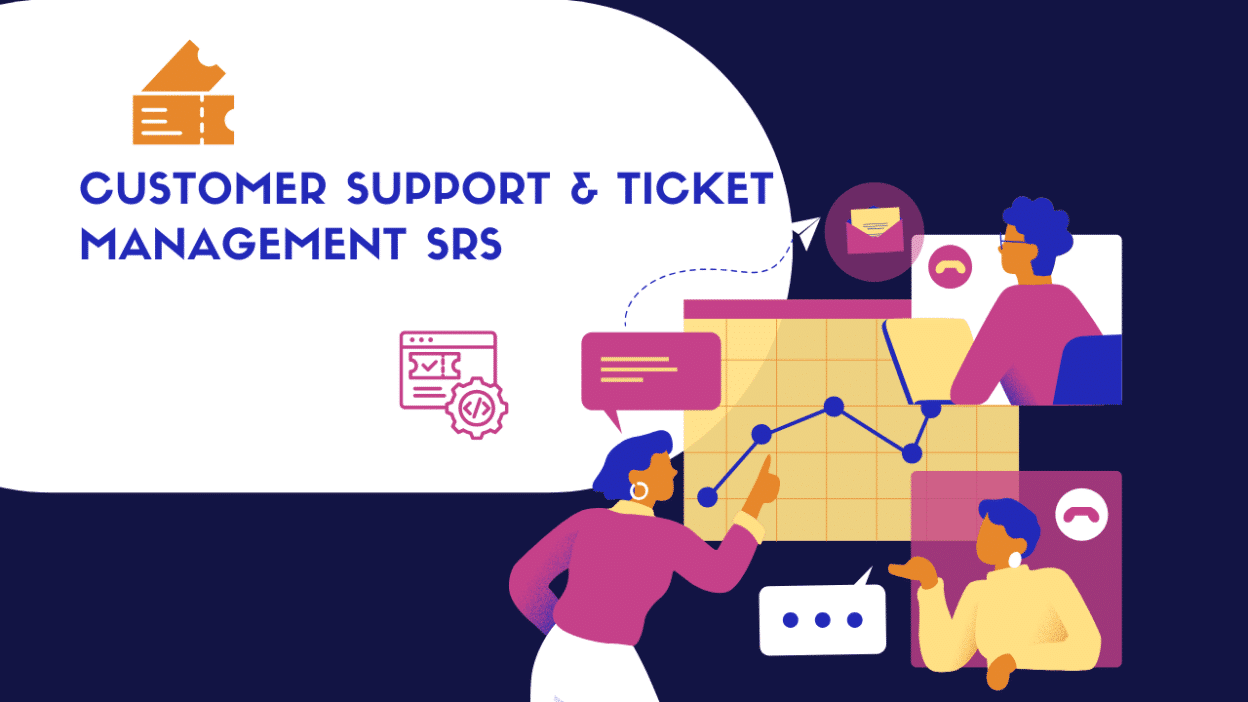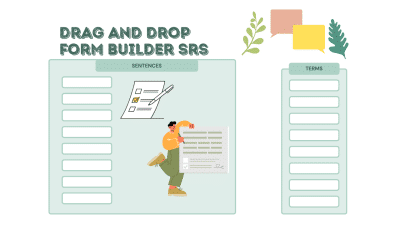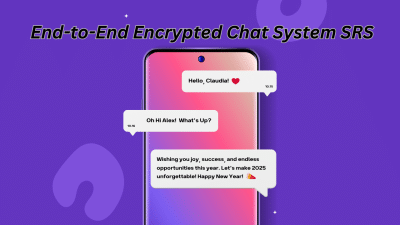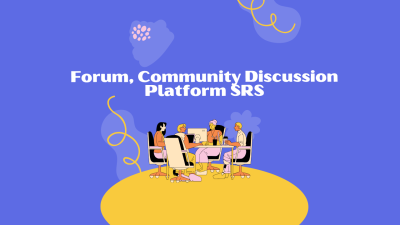Project Overview
Introducing a Customer Support & Ticket Management System designed to streamline chaos into clarity. This project aims to let users submit tickets via web, email, or live chat, while agents manage issues with a dashboard packed with priority sorting, SLA tracking, and file attachments.
A self-service knowledge base powered by AI will offer instant answers and robust security features like 2FA and encryption will keep data safe.
The plan extends beyond basics, with future upgrades like AI chatbots for instant replies, mobile apps for on-the-go management, and auto-categorization to route tickets efficiently. Multilingual support and social media integration will ensure global accessibility, turning social complaints into actionable tickets.
Built for businesses of all sizes, from startups to e-commerce giants, this system promises a smarter workflow and happier customers. With a focus on scalability and innovation, it’s set to evolve into a future-proof solution—efficient, dynamic, and ready to transform support operations.
Introduction
Purpose
The goal of this project is to develop a Customer Support & Ticket Management System that enables businesses to manage customer queries and support requests efficiently. It will allow users to raise tickets, track their status, and get support through different communication channels. Admins and support agents will be able to assign, track, and resolve tickets while maintaining customer satisfaction.
Scope
- User Registration & Authentication: Customers and support agents can register and log in.
- Ticket Creation & Tracking: Customers can submit support tickets and track progress.
- Support Agent Dashboard: Agents can view, assign, and resolve tickets.
- Multi-Channel Support: Users can submit tickets via web, email, and chat.
- Status Notifications: Users receive email/SMS notifications for ticket updates.
- Priority & SLA Management: Tickets are assigned priority levels and SLA (Service Level Agreement) tracking.
- Knowledge Base: A self-service portal with FAQs and solutions for common issues.
- Reporting & Analytics: Admins can generate reports on ticket volume, resolution time, and customer satisfaction.
Target Audience
- Small to Medium Businesses needing a streamlined customer support solution.
- IT Help Desks for internal employee support.
- E-commerce Websites handling customer inquiries and complaints.
Definitions, Acronyms, and Abbreviations
- Ticket – A customer’s request for support.
- SLA (Service Level Agreement) – A set response/resolution time for different ticket priorities.
- Agent – A support representative handling tickets.
- Admin – A user with full control over the system.
- Knowledge Base – A collection of self-help articles for common issues.
System Features
User Registration & Authentication
- Users (customers, agents, and admins) can sign up and log in.
- Role-based access: Admin, Agent, Customer.
- Password reset and two-factor authentication (2FA) for security.
Ticket Management
- Customers can create a ticket by filling out a form or sending an email.
- Support agents can view, assign, and resolve tickets.
- Ticket categories (e.g., Technical Issue, Billing Issue, General Inquiry).
- Ticket priority levels: Low, Medium, High, Urgent.
- Ticket history and conversation thread for reference.
- Ability to attach files (e.g., screenshots, documents).
Support Agent Dashboard
- List of assigned and unassigned tickets.
- Ticket sorting by priority, status, and category.
- SLA tracking to ensure timely resolution.
- Notes section for agents to collaborate internally.
Multi-Channel Ticket Submission
- Web Portal: Customers can log in and submit tickets through a form.
- Email Support: Automatic ticket creation from emails (e.g., support@company.com).
- Live Chat: Instant chat integration that can convert conversations into tickets.
Ticket Status & Notifications
- Ticket statuses: Open, In Progress, Resolved, Closed, Reopened.
- Email/SMS notifications for ticket updates.
- SLA alerts when a ticket is nearing its resolution deadline.
Knowledge Base & Self-Service Portal
- Customers can search FAQs and troubleshooting guides.
- Admins can create and manage knowledge base articles.
- AI-powered suggestions for relevant articles based on customer queries.
Reporting & Analytics
- Ticket Metrics: Number of tickets created, resolved, pending.
- Agent Performance: Response and resolution time per agent.
- Customer Satisfaction (CSAT) Surveys: Feedback collection after ticket resolution.
- Export Reports: Generate reports in CSV/PDF formats.
Security & Access Control
- Role-based permissions to restrict access to certain features.
- Secure authentication (2FA, OAuth, etc.).
- Data encryption for sensitive information.
- Activity logging for auditing purposes.
Technology Stack
Frontend
- React.js / Vue.js – For building the user interface.
- Bootstrap / Tailwind CSS – For responsive design.
Backend
- Node.js (Express.js) / Python (Django, Flask) / PHP (Laravel) – For server-side logic.
- MySQL / PostgreSQL / MongoDB – For database management.
- Socket.io – For real-time notifications and live chat.
Hosting & Deployment
- Cloud Hosting: AWS, Heroku, DigitalOcean.
- Database Hosting: Firebase, MongoDB Atlas, Amazon RDS.
- Email Service: SendGrid, Twilio for email/SMS notifications.
Security Measures
- SSL/TLS encryption for secure communication.
- JWT-based authentication for user sessions.
- Firewall & DDoS protection for system security.
System Architecture
High-Level Overview
The system follows a Client-Server Architecture where the frontend communicates with the backend API for ticket creation, retrieval, and updates. The backend processes user requests and interacts with the database to store and retrieve ticket information.
Database Schema
- Users Table: Stores user details, roles, and authentication data.
- Tickets Table: Stores ticket details (category, status, priority, user ID).
- Messages Table: Stores conversation history within tickets.
- Knowledge Base Table: Stores FAQ and troubleshooting articles.
Implementation Guide
Development Environment Setup
- Install Node.js / Python for backend development.
- Set up React.js / Vue.js for the front end.
- Install MySQL / MongoDB as the database.
- Use GitHub for version control and collaboration.
Core Feature Development
- User Authentication: Implement login, registration, and role-based access.
- Ticket System: Develop ticket creation, assignment, and status update features.
- Email Parsing: Integrate email-to-ticket conversion.
- Live Chat Integration: Implement chat for real-time support.
- Knowledge Base Management: Develop the FAQ system.
- Notifications: Implement email/SMS notifications.
Testing & Debugging
- Unit testing for backend APIs.
- UI testing for customer and agent dashboards.
- Performance testing for concurrent ticket processing.
Deployment
- Deploy the application on AWS / DigitalOcean.
- Set up HTTPS and domain configuration.
- Monitor logs and optimize performance.
Future Enhancements
- AI-Powered Chatbot: Automated responses to common queries.
- Mobile App: iOS/Android apps for on-the-go ticket management.
- Multi-Language Support: Localization for global users.
- AI-Based Ticket Categorization: Auto-categorize tickets using machine learning.
- Social Media Integration: Convert Twitter/Facebook messages into tickets.
Conclusion
In a nutshell, this system takes customer support to the next level—effortless, efficient, and packed with smart features. With future upgrades like chatbots and mobile apps on the horizon, it’s not just keeping up—it’s leading the charge.
Businesses of all sizes can use this system to deliver top-notch service and keep customers happy. Ready to take your support game to the next level? Dive in and see what the future of customer support looks like.




